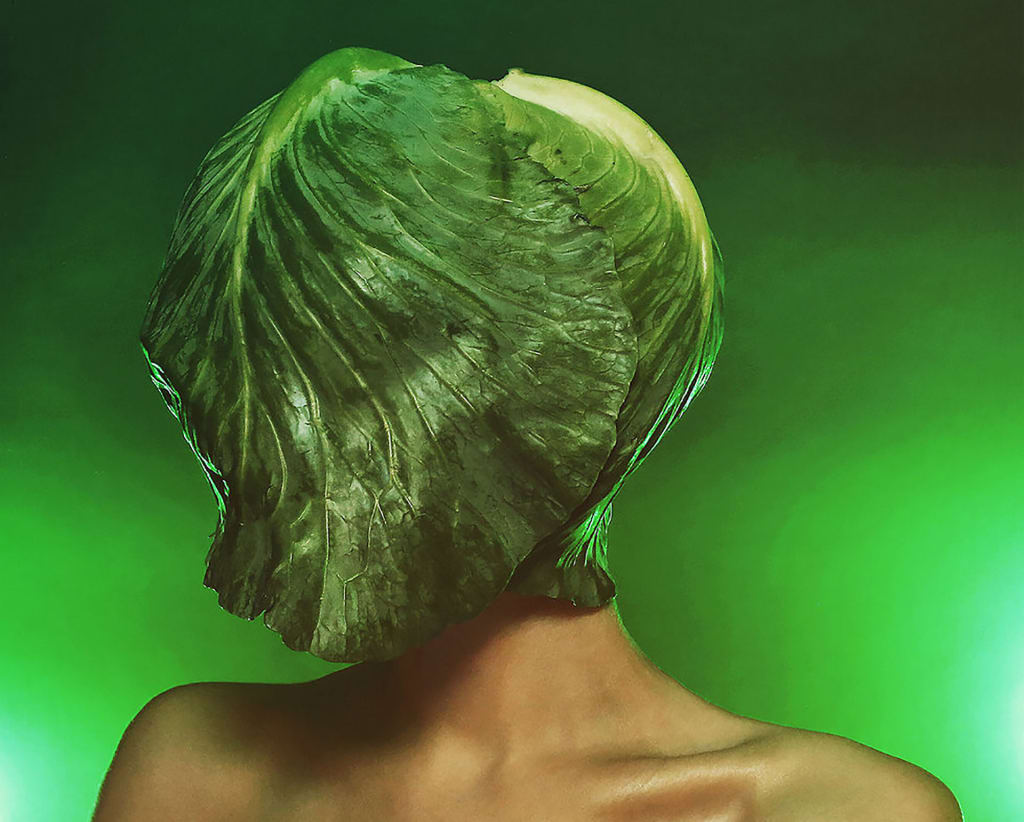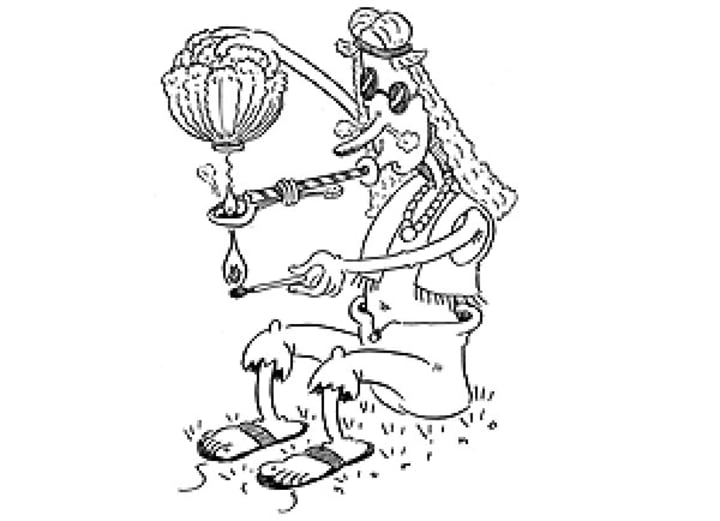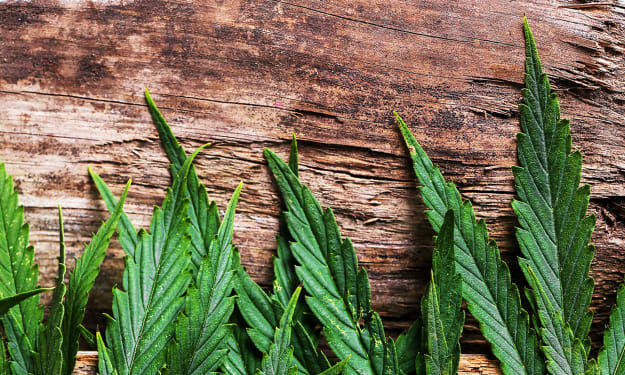Can You Smoke Lettuce?
Lactucarium, in lettuce extract, has been called lettuce opium in various patents that exist from as far back as 1793.

Not everyone who probably would benefit from cannabis products is prepared to to do something illegal. Others have neither the time for meditation nor an appetite for abstinence. The logical solution, then, was to come up with something legal, harmless, potent and available, that would turn on the tastes of the most jaded cannabis connoisseur... Thousands of medicine men and would-be moguls have tried... and most have failed.
Lettuce opium was once all the rage in synthetics. And although lettuce opium is hardly what you would call a common substitute for a good columbian gold high, it is as common as was a concoction that people manufactured in the 1960s from bananas.
Both were, and still are, legal. The short lived history of "banana dope," a period condensed into a mass somewhat heavier than its reputed high, is testament that is legal is not always better. Lettuce, like the bananas, is another natural solution for those looking to find a more legal and available substance to smoke.

I didn't know much about it and I didn't want to have to smoke a pound of mail order sludge to discover if, what bears a strong resemblance to ordinary rhinoceros foreskin, was going to give me a buzz–or if it belonged in a novelty shop. The problem with buying an amount of anything is that you can't always tell if it's enough. Besides, lactucarium, the active ingredient in lettuce opium is unstable. It doesn't really have much of a shelf life. If you're into lettuce opium, you buy it, you use it.
Lactucarium, in lettuce extract, has been called lettuce opium in various patents that exist from as far back as 1793. The highest lactucarium yield comes from wild lettuce. Lactucarium was actually used as an opium substitute for its reputed sedative and pain-killing effects. Lettuce opium has a striking similarity to poppy opium–different from the former in that it's legal, more mild and non-addictive.
Lettuce opium had never been offered before for smoking, according to the Romaine regulars. Available on Amazon, Lettuce tinctures extol the virtues of lettuce opium. The copy stresses the mild psychotropic qualities of lactucarium which, no matter how slight, like Aphrodisia, Gotu Kola, nutmeg, bananas and birdseed, are legal. Indeed, people buy and sell millions of dollars worth of this questionable product. While there is nothing concerning about the ingredients, the effects really are subjective and at best specific to individual biochemistry. But we all have to admit, most bunny rabbits seem pretty baked.
In spite of the proliferation of this remunerative niche industry, there still isn't enough evidence or demand to make it a worthy competitor to the cannabis alternatives. Like many natural products that claim medicinal relief and psychotropic effects, lettuce extract is a function of personal taste.
Publicity has been no problem. The major media sites have done numerous articles on the benefits of lettuce extract from. The price of lettuce opium is less than other alternatives, in spite of the fact that it takes 64 heads of lettuce to manufacture a pound of lettuce extracts. If you are the "do it yourself" kind of person, a $160 investment covers a lot of ground. The raw materials are bought at farmer's market for less than supermarket cost. And a few friends who work in restaurants can help arrange clandestine pickups in out of the way places at night. Don't be surprised to see lettuce head dealings in back alleys. Common consensus is that at best the extract can create a mellow buzz, but without THC, it is like most over the counter tinctures.
There are a number of combinations of lettuce extract and roughage to make the product burn better. Since water is the base used in the extraction, there is nothing foreign or harmful in the product. It is a process to make sure that your product doesn't turn to a sticky element that feels more like glue than tincture. Perhaps a better alternative are tablet and pill options.
In the 1980s, hyped by press coverage, many thought this might be the product of the century, that will lift the chains of oppression and the yoke of paranoia from illicit marijuana dealing. People believed it would also smoke, taste and feel as good as the best West Virginia homegrown. Barns were to be filled with lettuce heads hanging hearts down, curing in the dark, drying on nails in bunches, gathering strength until they are perfectly ripe for shredding, boiling, baking, mixing and smoking. But that didn't happen. The appeal wore of, the process was perfected and small organic manufacturers institutionalized the process and retail model.
In my research, I read an article on lettuce opium from the 1970s written for The Villager in New York by Bob Rosen. Rosen had tried all the legal opiates he could buy. He'd run the gamut of flakes and gums and powders and said that only legal opium–Olmsted's lettuce opium got him high. I have tried all the rest too. I'd even smoked wood pulp in a packing plant, grapefruit skins, crushed apple seeds and more-only to make myself sick. Never was anything more satisfying than good old weed.
There was the Mexican weed in Zihuatanejo, Guerrero, that lifted my mind from my body from the hammock on the beach. And the hashish in Paris that laid me back in strange company almost comatose, until I came to the next day and wandered stoned for hours through the Tuileries. And the weed in Ohio that made the ennui of the Midwest very bearable. And the Colombian in New York that cut through the dirt and noise and speed of the city like no other marijuana.
Rosen's article wasn't enough to give me faith, but it did hold promise. I could have stayed home and made a batch of lettuce opium myself from the recipe book, but it seemed wiser to try the new improved variety that was professionally made.
Besides, the thought of a grimy, smoke-filled kitchen, with baked-on black pots and pans that have been used to collect extract of lettuce, was just too much work. In the 1980s, lettuce extract or tincture was still a cottage industry. It was hand made and hand packaged. The packaging on the product was perfect. Little yellow plastic stash boxes, hand-packed with hand-wrapped one and two gram units in aluminum foil. The labels were black ink on green day glow. Today it is all available on line.
I sat down with a friend, who had some pre-processed raw product. It looked like a dark green pig's ear of lettuce opium that could have been homemade-hash. I broke off a piece and lit up. I took a toke from his giant bong. A half hour later, I was still pulling huge clouds of the mild smoke into my bursting lungs. It was the old hyperventilation high all over again. One toke after another until at least I had a good oxygen head on. My heart banged in my head; blood pulsed in my ears. I think I was getting high when someone finally passed a joint my way. My recommendation, get some tincture and take it daily with your regular regime. It may not get you high like marijuana, but the natural effects may still be worth experimenting.
Alternatively, and this should go without saying, CBD oil exists and is not nearly as exotic as lettuce. I'm leaving a link below to some good ol' fashion oil for next time you're confronted with the choice. Good luck out there.
About the Creator
David McCleary
Holistic health practitioner. Believes in using natural remedies over traditional medications whenever possible. Volunteers at a recycling plant.






Comments
There are no comments for this story
Be the first to respond and start the conversation.